Slides
advertisement
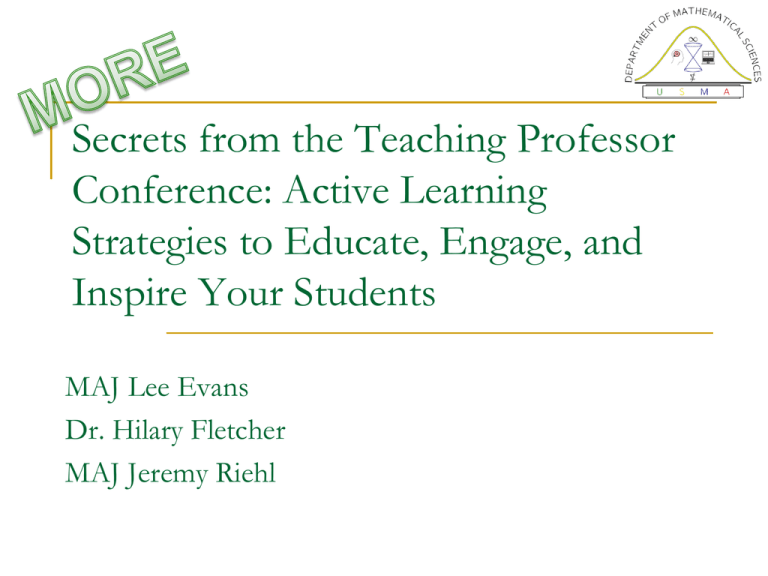
Secrets from the Teaching Professor Conference: Active Learning Strategies to Educate, Engage, and Inspire Your Students MAJ Lee Evans Dr. Hilary Fletcher MAJ Jeremy Riehl What is the Teaching Professor? “There is always something new to learn about teaching and learning. The best way to expand your teaching and learning knowledge and expertise is by interacting with top teaching and learning experts and colleagues from a wide variety of institutions and academic subject areas. This is what The Teaching Professor Conference is all about.” 2 Activity “Activities makes students feel vulnerable.” -Dr. Donna Qualters, Suffolk University 3 Ideas and Strategies for Developing Lifelong Learning Skills in Students Introducing students to a problem solving process Activities to illustrate Develop discipline-specific problem solving process 4 5 History Example Understand the Problem: Define Key Terms- Defining key terms in the problem statement allows students to understand what is being asked. Search for Sources- Starting with secondary literature will lead students to primary sources. This will assist in developing a plan for answering the problem posed. Devise a Plan: Evaluate Sources- Be skeptical of both primary and secondary sources and look for bias. Consider the authority of each source. Read Sources- Adjust evaluations of sources. Where appropriate, make calculations from numerical data. Carry Out the Plan: Develop Hypotheses- Support each hypothesis with evidence gathered from sources. Select Strongest Hypothesis- Eliminate hypotheses that lack support and search for those with the strongest evidence. Look Back: Communicate Clearly- Explain why alternate hypotheses are weak and provide evidence and analysis to support the chosen hypothesis. 6 Ticket to Retention 2 Kent Divoll and Sandra Browning, University of Houston - Clear Lake 3-5 questions, structured around lesson End of class, discuss and refine answers Pros Students feel accountable Forces students to explain the lesson Clears up misunderstanding Cons Takes time to create Students focus only on what is on sheet Must reserve the last 10 minutes of class 7 Your Student as the TA… …in using our students as Teaching & Learning Assistants (TLAs) we expect them to bring what they already know from other courses into our course, and we use that knowledge to make our job easier (in operating day to day) and other students’ experience richer. 8 Your Student as the TA… Inventory of Skills Leverage specific skill sets of your students to assist in the course Teaching and Learning Assistant (TLA) Students apply their knowledge of the discipline in a “service learning” project Serve as a peer tutor Ad hoc TLA assignment Students learn/present “more” on the material 9 How Can Students Help you? The chart below can be used for initial brainstorming of possible TLA assignments and student involvement in the classroom. Preparation for Class Assessments During Class Time Course Management 10 And now, for something different “Developing Positive Interventions that Improve Learning” “Finding Joy in Teaching” “Why Don’t My Students Think I’m Groovy? Engaging Millennial Learners” 11 WWKD? 12 13 Positive Psychology: Character Strengths 14 MA XYZ LESSON INSTRUCTOR: DATE: SUMMARY CONCEPTS GRASPED CONCEPTS NOT GRASPED WELL SELF REFLECTION A A A B B B D D D ENDING POINTS/OTHER NOTES A B D J.O.Y. “Joy robbers” vs. “Joy boosters” Renewal activities Create a vision for your teaching 16 Millennial Students “How Groovy am I?” Checklist Not just a generational gap Technology 17 iPad uses Electronic Reference Course Notes Exchange Information Organize Learning Computations Rate how well the iPad helps you learn or understand the course material (25 Aug) 40% 35% 30% 25% 20% 15% 10% 5% 0% 3% 3% 19% 38% 31% very unhelpful slightly unhelpful neutral slightly helpful very helpful Rate how well the iPad helps you learn or understand the course material (18 NOV) 40% 35% 30% 25% 20% 15% 10% 5% 0% 6% 6% 38% 38% 13% very unhelpful slightly unhelpful neutral slightly helpful very helpful Some cadet comments: “Being able to make in-text annotations in iAnnotate and quickly reference them for studying has proven to be very helpful. Numbers and SpaceTime have greatly helped in completing assignments in a timely manner without sacrificing concept comprehension.” “The iPad is an amazingly efficient tool for learning and completing coursework in MA103.” Some other comments: “While having the textbook compressed to the iPad is certainly a nice feature, the iPad isn't entirely conducive to doing math homework and causes me to spend more time finishing my math than I would otherwise.” “The textbook is very helpful to have on there, but sometimes crashes. Notetaking and homework is a bit more difficult because you can't look at the textbook/board sheet and use the note taking apps at the same time.” Teaching with the iPad Presentation of material Technology overload Effective leveraging of capabilities Maintaining initial excitement Conclusion "Learning is not a spectator sport. Students do not learn much just by sitting in class listening to teachers, memorizing repackaged assignments, and spitting out answers. They must talk about what they are learning, write about it, relate it to past experiences, apply it to their daily lives. They must make what they learn part of themselves.” (Chickering & Gamson, 1987) 26

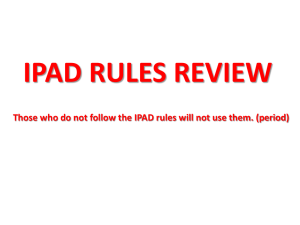

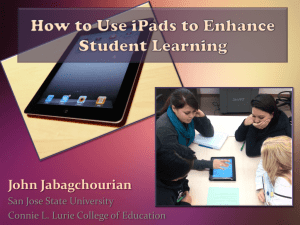

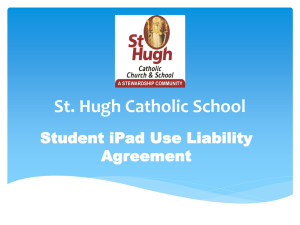
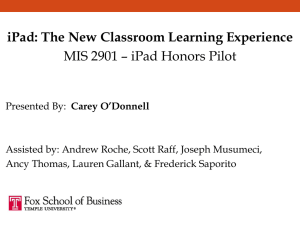
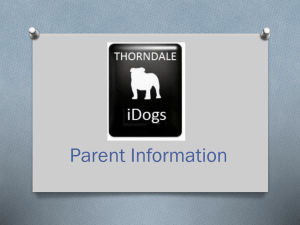
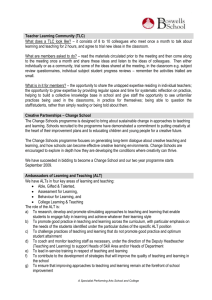
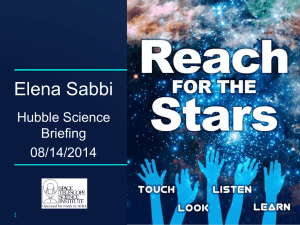

![Economics[1]](http://s2.studylib.net/store/data/005407705_1-b9621186d5f22b5db90e7ce099a9adfe-300x300.png)